
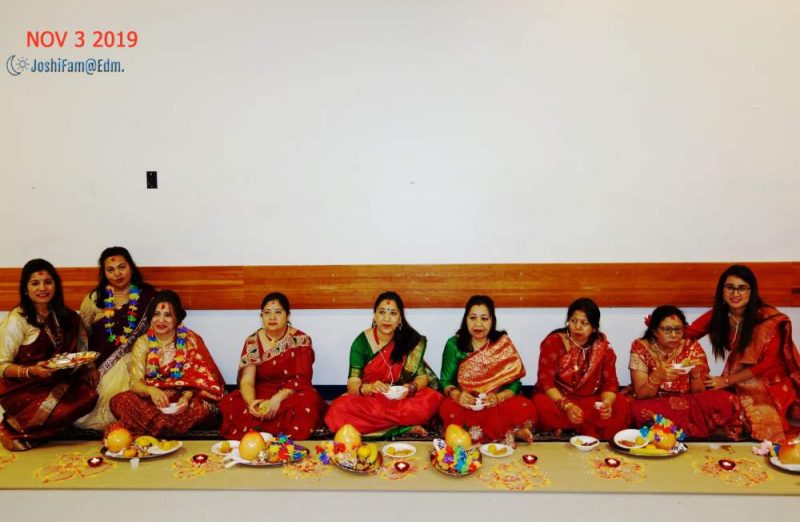
The Nepalese community in Edmonton observed Mha Puja (The Worship of Body Persona) and New Year (Nepal Era 1140) amidst a special cultural event at Duggan Community Hall in Edmonton, Canada on Sunday November 3, 2019. The cultural event was hosted by the Newa Cultural Society of Alberta (NCSA), a local organization established under the Societies Act of Government of Alberta to practice, promote and preserve Newa culture and traditions in Edmonton, Canada.
The cultural event was jointly inaugurated by Mr. Richard Feehan, Member of Legislative Assembly (MLA) and ex-Minister of Government of Alberta; and Dr. David Baine, Professor Emeritus, University of Alberta; by lighting the Twadewas, traditional Nepalese artistic oil lamps. Similarly, Dr. Hemanta Joshi, President of NCSA, garlanded on the portrait of Sankhadhar Sakhwal, the founding father of Nepal Era calendar.
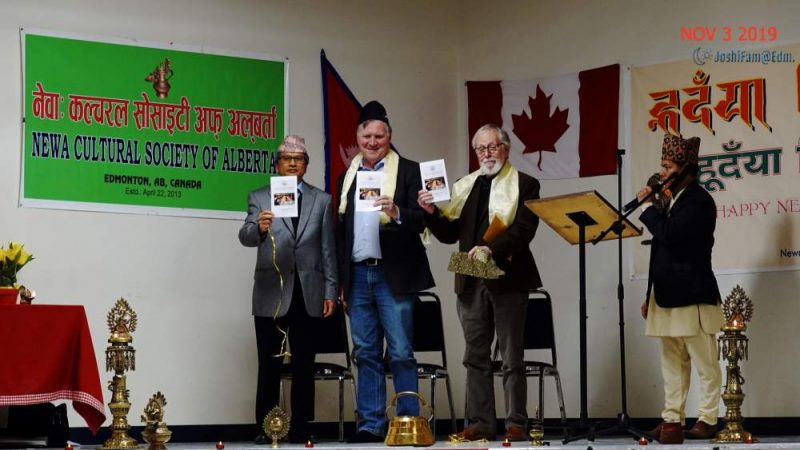
In the inaugural session, Dr. Hemanta Joshi, President of NCSA, delivered a welcome speech highlighting the significance of Mha Puja and New Year (Nepal Era). Dr. Joshi briefly spoke about the philosophical aspect of Mha Puja. According to Dr. Joshi, Mha Puja is purely an ancient cultural tradition and can be performed by people of any background, color and faith simply to recognize, respect, empower and purify the soul for fruitful, meaningful and peaceful living. According to Dr. Joshi, in today’s context, the Mha Puja tradition not only belongs to Newa or Nepalese people but also belongs to the people of the world as the Mha Puja tradition was originated from Kathmandu Valley, home of the seven world cultural heritage sites designated by UNESCO. In the inaugural session, a booklet on Mha Puja and New Year of Nepal Era was unveiled jointly by MLA Richard Feehan, Dr. David Baine and Dr. Joshi.
In the inaugural session, MLA Richard Feehan extended his Mha Puja and New Year Greetings to the members of the community. He expressed his satisfaction being part of the cultural event to observe Mha Puja and New Year celebration together with the Nepalese community. Dr. David Baine also extended his Mha Puja and New Year greetings to the members of the community.
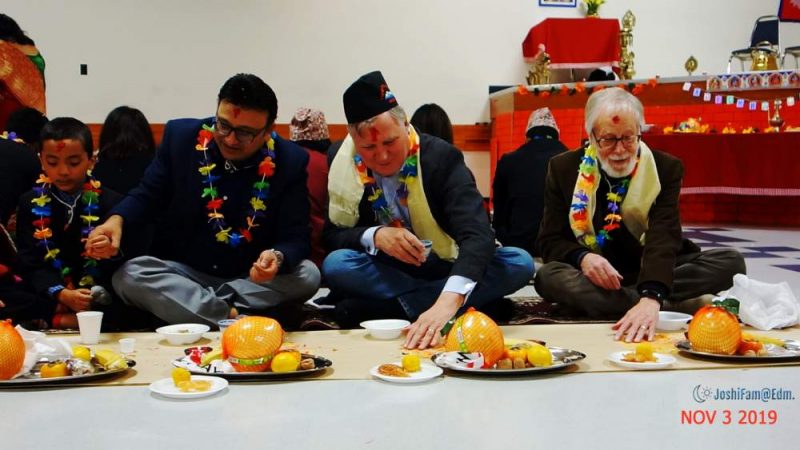
After the inaugural session, the Mha Puja ceremony took place in a traditional way. All the participants including MLA Richard Feehan and Dr. David Baine sat cross-legged in front of their colorful Mandalas drawn to represent inner soul. A group of Thankalinakins (senior ladies) from the community facilitated the Mha Puja ceremony. They offered Dhau Shinah [a dab of colored paste made from yogurt, whole grain rice and vermillion powder] to the participants on their forehead. All the participants in the ceremony worshiped their soul offering flower, whole rice grains, puffed rice, and vermillion powder in their Mandalas. As part of the ritual, all the participants received an auspicious tray containing garlands, Kokha (sacred threads to wear around the neck to protect from evil spirit), seasonal fruits, ethnic sweets, Masala Po (a package of dry nuts, spices and candies), whole walnuts, Syangli (whole filbert nuts), and peanuts in shell from the Thakalinakin as blessing for fruitful and resourceful life. A burning tealight [substitute for Khelu Ita (wicked oil lamp)] as a symbol of brightness of the soul was also handed to the participants in the Mha Puja ceremony.
At the end of the Mha Puja ceremony, all the participants received auspicious Khen Sagan [a ritual food comprised of five key elements of the universe: deep-fried egg representing sky, Woo (deep fried pancake made from black lentil) representing air, small fried whole fish representing water, steamed and fried pieces of meat representing earth, and Aela (whisky) representing fire] from the Thakalinakin as blessings for good luck, bright future and prosperity through the New Year (Nepal Era 1140). The Mha Puja ceremony was formally concluded by dragging a broom over the Mandalas by one of the helpers to the Thakalinakin.
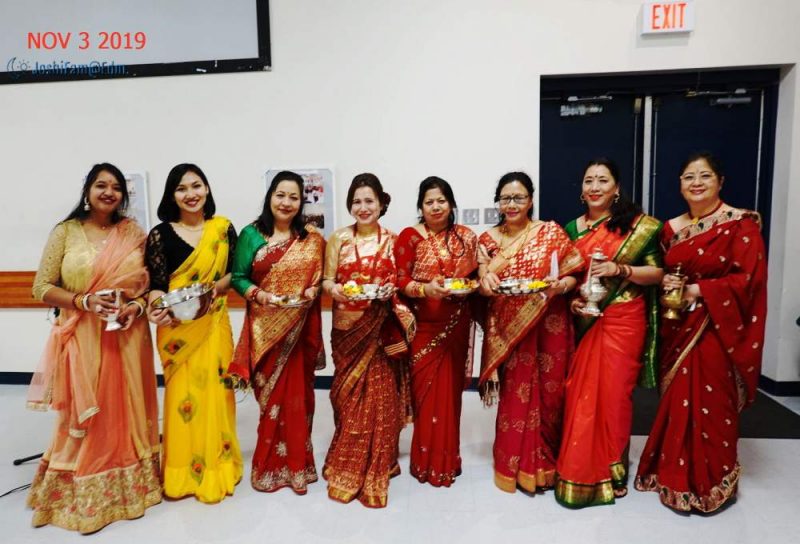
After the Mha Puja ceremony, participants were entertained with cultural programs (ethnic songs as well as cultural quiz related to Mha Puja and Nepal Era calendar). At the end of the cultural event, an ethnic dinner was served to all the participants.
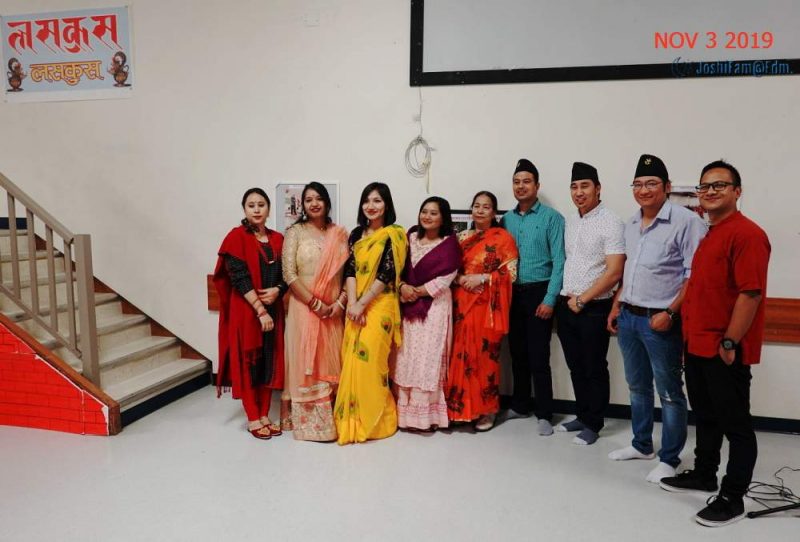
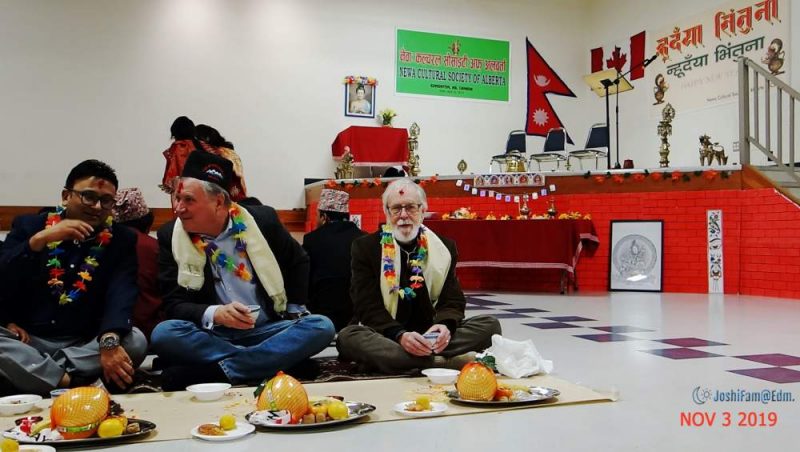
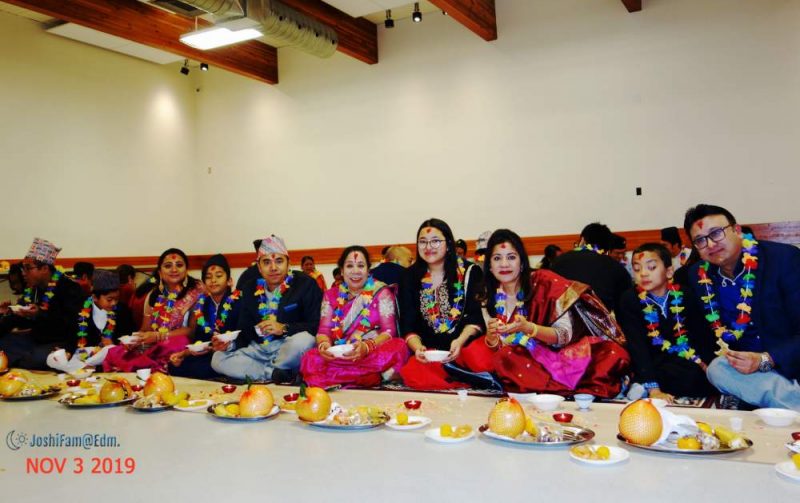

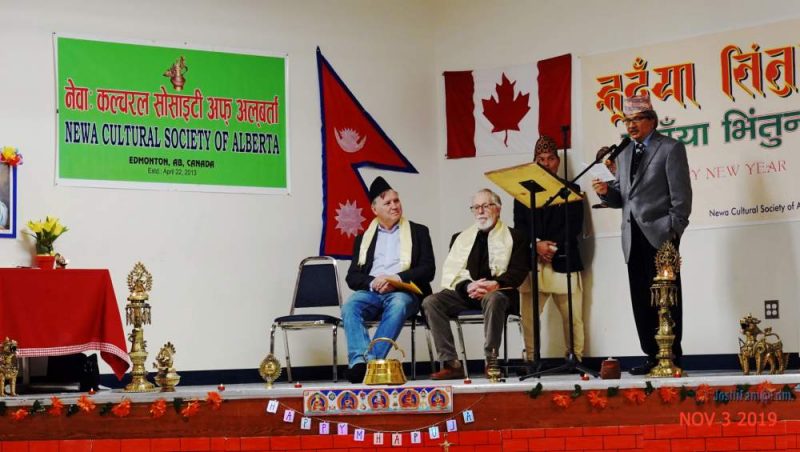
Comment